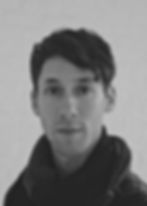
KINESTHETIC
MOTION
CAPTURE
Partnering Lab creates wearable sensors for capturing motion. Whether users are professional athletes, developing choreographic sequences, or improvising freely, our sensors provide tools for embodied reflection and analysis of physical interaction.

PROJECT DESCRIPTION
Much of the research in motion capture focuses on external, visible movement that can be captured by cameras or trackers. Our research focuses on the internal, kinesthetic experience of movement that is difficult to perceive outside of experience. Consider how shaking someone's hand, you can feel a tight, overpowering grip or a loose, "dead fish" shake. Consider how going in for a hug, you can sense resistance through back and core muscle flex, or a release of tension.
We develop motion capture technology that targets micro-movements, including rotation, proximity, and the activation of core muscles involved in effortful and effortless action. The technology is designed to stimulate a mindful understanding of bodily movement by sensitizing users to their own modes of physical, non-verbal communication. Similar to more traditional mindfulness practices, use of this technology leads to increased bodily awareness and encourages effective and ethical engagement between people in the age of modern technology.
CREATIVE APPROACH
Using a number of tools for capturing motion, including electromyography, piezometers, gyroscopes, radio transmitters, and infrared lasers, our sensors allow users to modify controls that respond to movement, including sound and light-based outputs. Whether users are developing choreographic sequences or improvising freely, sensors provide a tool for embodied reflection and analysis of physical interaction.
The methods for this research have been developed using practice-based inquiry on partnered dance, including tango, contact improvisation, ballet, and Latin/Ballroom techniques. Users need not have any background experience in dance to investigate the subtle aspects of physical interaction. Sensors have been used in performance at Jacob's Pillow Dance Festival, Center for Performance Research (New York City), the Harvard ArtLab, Tedx Providence, the Harvard Consortium for Digital Humanities, and the MIT Media Lab. The artistic work continues in collaboration with dancers, musicians, composers, and interaction designers.
PUBLICATIONS
(2020). Priming Haptic Values with Wearable Technology, Partnering Lab.
TEAM




